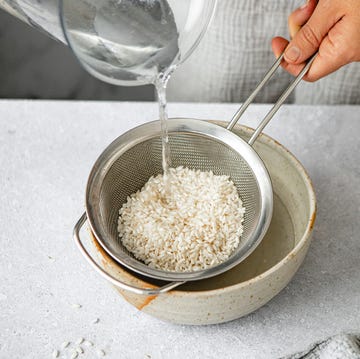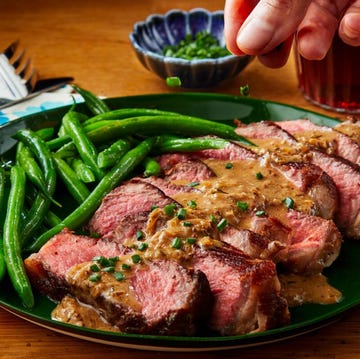A big pot of soup can feed a crowd—and then some! So, if you have leftover soup or you're simply trying to meal prep for easy dinners throughout the week, then you'll definitely need to know the best way to freeze soup. Whether it's chicken soup, beef stew, or homemade split pea, there are plenty of easy soup recipes that can be made in batches. And with just a few easy tips, you can stash that soup in the freezer for up to three months! Just think how happy you'll be on a chilly winter night when you can simply heat up a bowl of comforting chicken tortilla soup.
To make sure you get the most of your freezer-friendly meal, just follow the simple steps ahead. Find out which soups are best for freezing and which food containers you should use. Ree Drummond has a clever trick for storing soup in the freezer, so it doesn't take up too much space! Plus, everything you need to know about reheating soup, so it tastes as warm and comforting as the first time you made it.
Once you've figured out how to freeze soup, check out Ree's recipe for hamburger soup. "Bake a batch of corn muffins to go with it," Ree says, "and no one will know (or care!) that dinner came straight from the freezer."
How to Freeze Soup
Freezing soup couldn't be easier, but there are a few simple steps to follow.
1. Allow the soup to cool.
This step is very important for food safety and preventing freezer burn! Once you've made your soup, let it fully cool before moving on to the next step. You can speed up the process by placing the pot of soup in an ice water bath in the sink. Stir the soup occasionally until it’s completely cool. Alternatively, separate the soup into smaller portions to allow it to cool faster.
2. Label your containers.
Grab the containers of your choosing—airtight freezer bags or reusable food storage containers—then, label and date it so you can easily identify it in the weeks ahead.
3. Store the soup
If using a freezer bag, place the bag in a tall measuring cup or bowl and fold the edges over the rim. This will make it easier to ladle the cooled soup into the bag. Leave a 1/2 inch to an inch of space at the top (to allow the liquids to expand when frozen), then flatten the bag as you seal it. Ree likes this method because it allows you to "stack them as high as they'll go!"
If using a food storage container, simply divide the soup into portions. You can freeze individual portions that easily pop out and heat up during the week or larger portions depending on your preferences and space in the freezer. Again, leave a 1/2 inch to an inch of space at the top.
4. Freeze the soup.
Place freezer bags in a single layer on a flat surface (or a baking sheet) in the freezer. Once frozen, you can stack them up to save space. Alternatively, store your food containers in the freezer until you're ready to reheat. Soups can last in the freezer for at least three months.
The Best Containers for Freezing Soup
Soup containers can come in all different shapes and sizes. Ree likes to use airtight plastic bags to save space in her freezer. But you can also use plastic or heavy-duty food storage containers or freezer cubes for individual portions.
The Best Soups for Freezing
The best soups for freezing are broth-based soups. Unfortunately, those creamy soup recipes you love aren't the best for freezing. The cream or dairy will cause them to become grainy when reheated. But don't worry, all hope is not lost if you want to make a big batch of creamy soup. Instead, just prepare the soup up until you add the cream or milk and freeze. You can then add the cream once you’ve reheated the soup. Additionally, any soups made with noodles or rice can also become mushy when reheated. Instead, leave the noodles, rice, or grains out of the soup before freezing, then just cook the pasta separately and add to the soup when you're ready to serve.
How to Reheat Soup
To reheat your soup, simply place the bag or container in the fridge to thaw overnight. (If you used bags, placing them in a bowl is a helpful trick to catch any potential leaks.) Then, you can easily reheat it on the stovetop or in the microwave for dinner the next night. If you’re in a hurry, you can also defrost your soup in the microwave as long as it's in a microwave-safe container. Then, transfer to a pot on the stovetop and gently reheat.















